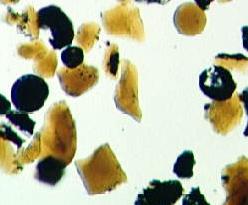mep wrote:I expected those to arguments to pop up and yea finally they are here. My comments never seem to attract much attention.
1. lower gravity
2. no air resistance
Agreed those points are very valid. However the mass of the vehicle remains at 700kg so at least acceleration is affected by this...
Sure,
you have to design a suspension for 1/6th of gravity, so the elements that resist vertical loads can be very thin, compared with ones made for the Earth.
However the inertia is the same. So all elements that resist forces in the horizontal direction have to be reinforced, compared with those that resist vertical forces that can be made lighter.
I understand it is quite difficult to learn to jump in the moon: while you feel lighter when you jump
up, you are as heavy as always when you try to stop moving
ahead.
mep wrote:Well lets come back to the rover which is moving on dust. What do you think how much energy is consumed to move trough that dust? There is no water so possible nothing holds the particles together. Those tires made of a steel web might just cut trough it consuming the power.
Well, fine particles are held in place by electric charges. In dust, the electric charges migrate to the pointy parts which become positive (that's why lighting rods are more or less pointy), while the flat parts are negative. I won't delve into double layers, isomorph substitutions nor free hydroxil ions... but all contribute to this electric potential.
So, you do not need water for clays to develop cohesion: they do it by electricity.
On the left, wet dust, on the right, dry dust. In both systems, you have flat particles, and pointy parts of them stick to flat parts of others, edge to face.

That's why the darned dust is so hard to clean from a dirty suit, it adheres by electricity. Soap breaks those electrical bonds.
So, by this cohesion the tyre cannot penetrate the dust. Even when you don't have suction from water (by capillary action) you have electricity in dry particles that gives you cohesion.
Now, this cohesion resist penetration in areas much larger than the size of grains, because arches are formed.
Catenary sand arch, internal forces are mainly compression, there little torque or tension, so it can be made of sand.

Lunar soil is made of very round particles (for a soil) because most of them are not created by thermal expansion or hydration, as in Earth, but by meteorite collisions. Nonetheless, in a picture of the lunar soil there are a few flat flakes here and there. Like this:
Lunar soil

BTW, mep, I'm always interested by your posts.








